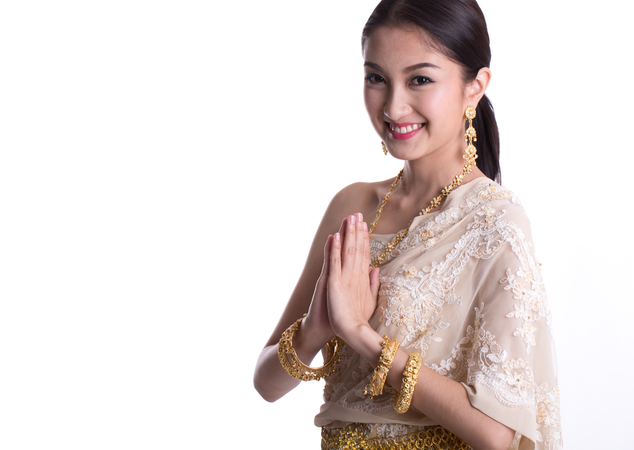|
First, starting out by learning and understanding etiquette, I mistakenly gave my Asian coach a beautiful glass crystal clock gift. In horror, after reading her extremely kind email of thanks, she explained the cultural differences between what the Chinese thought of clocks and the superstition behind them. What a cultural etiquette faux pas to make! Cultural differences significantly impact communication and etiquette by values and expectations in social interactions. These variations can be subtle or more pronounced, influencing various aspects of communication, including verbal and nonverbal language, directness, and politeness norms. So, you are probably now asking what cultural etiquette or protocol is. or even this....what are the rules of cultural etiquette? and how do you follow cultural protocol? Here are several pointers that can help when speaking to international counterparts at work or travelling on holiday: Communication Styles: Different cultures may have varying preferences for communication styles, such as directness versus indirectness. Some cultures value explicit and straightforward communication, while others prioritise implicit or indirect expression.
Non-Verbal Cues: In various cultures, body language, gestures, and facial expressions can convey different meanings. What is considered acceptable or respectful in one culture may be interpreted differently in another, leading to potential misunderstandings.
Hierarchy and Authority: The perception of hierarchy and authority varies across cultures. Some adhere strictly to hierarchical structures, while others may adopt a more egalitarian approach. This influences how individuals express themselves and respond to authority figures.
Greeting Customs: The way people greet each other can vary widely. Some cultures embrace physical contact, like hugs or kisses, while others prefer a more reserved approach, such as a bow or a handshake. Understanding these differences is crucial in avoiding unintentional disrespect.
Gift-Giving Customs: The etiquette surrounding gift-giving can differ significantly. In some cultures, gifts are opened immediately, while in others, it may be considered polite to open them later privately. Additionally, the types of gifts that are appropriate can vary.
Dress Code: Cultural norms regarding dress code can impact how individuals present themselves in various settings. Understanding the expectations around attire is crucial for demonstrating respect and appropriateness.
Awareness of these cultural differences is essential for effective cross-cultural communication and for navigating social situations with sensitivity and respect. The key to bridging the cultural gaps is to pay attention to nonverbal cues and adapt communication styles accordingly. Practising patience and having an open mind. Ask questions and seek clarification when uncertain to avoid misinterpretations, and last but not least, embrace and celebrate cultural diversity. Our world is an amazing place!
0 Comments
G'day mates! If you've ever found yourself down under and felt like you were speaking a different language, fear not! You've just stumbled upon the land of Aussie slang, where the lingo (language) is as unique as the wildlife (kangaroos and koalas). So, chuck on your thongs, grab a cold stubby, and let's dive into the dinkum world of Australian slang. G'day, Mate! - The quintessential Aussie greeting, "G'day" is short for "good day." It's a laid-back way to say hello, whether you're meeting a friend or just passing by. And "mate"? Well, that's your buddy, your pal, your cobber. Aussies throw it around like confetti. Fair Dinkum - If something is fair dinkum, it's genuine, real, and true. Aussies use it to vouch for the authenticity of a statement or to express disbelief. "You caught a fish this big? Fair dinkum?" Arvo - We love to shorten words. Afternoon becomes "arvo." So, if someone asks to catch up in the arvo, it means they're suggesting a meet-up later in the day. Thongs - No, not the underwear. In Australia, thongs are flip-flops. So, if someone tells you to put on your thongs before hitting the beach, they're not getting too personal—they just want you to be comfortable!
Chuck a U-ey - When you're driving and suddenly need to make a U-turn, you "chuck a U-ey." It's as simple as that. Just be sure to check for kangaroos before you swing around! Barbie - No, not the doll. Aussies love to throw a prawn (shrimp) or snag (sausage) on the barbie (barbecue). It's practically a national pastime. So, if someone invites you to a barbie, expect farm fresh food, good company, and maybe a cold beverage or two. Stubby - Speaking of beverages, a stubby is a small bottle of beer. Whether you're enjoying it on a scorching arvo or at a ripper party, a stubby is a quintessential Aussie refreshment. There you have it—a crash course in fair dinkum Aussie slang. When someone asks if you're keen for a chinwag (small talk) over a cuppa (coffee or tea) or a cold one (beer), you'll be ready to join the ranks of true blue Aussies. Cheers, mate! Article Published: Etiquipedia.blogspot.com |
AuthorElizabeth Soos Archives
March 2025
Categories |
|
CONTACT US Submit Your Enquiry |





 RSS Feed
RSS Feed

